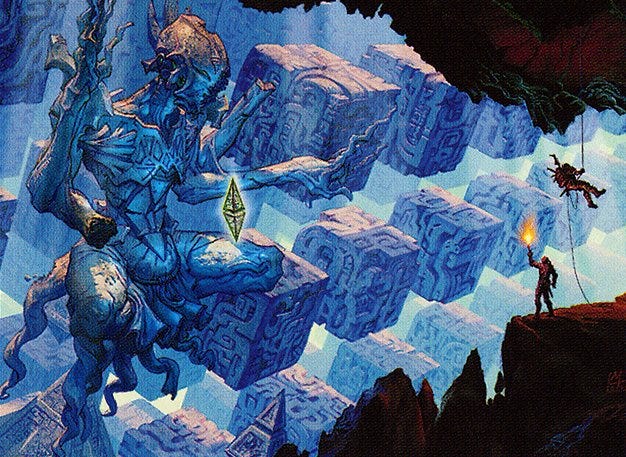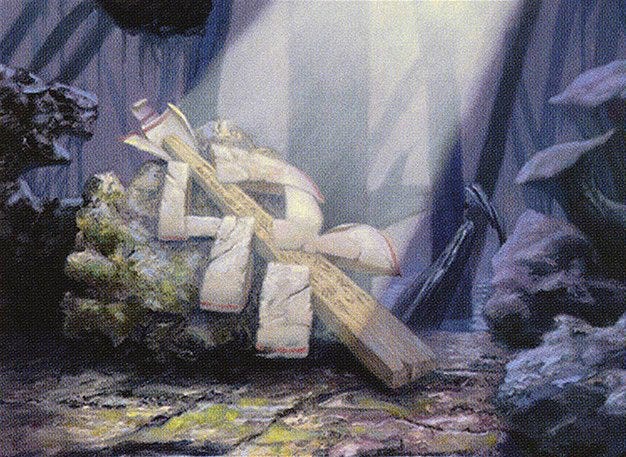The Cube Is Bigger Than You
Since the early days of my cube writing, I’ve been wanting to do an article about defensiveness in cube design. I’d created several drafts of it, but it never got much further than “hey, don’t get defensive about cards in your cube.” I’d certainly seen my fair share of it over the years in cube forums and discussion spaces. When I picked up on it, it usually meant that discussion wasn’t going to be fruitful and was when I’d realize that expending more mental calories wasn’t going to do anything.
A recent episode of Lucky Paper and a somewhat older one made me think again about approaching criticism as a cube designer. Those episodes discuss the topic pretty well, so I won’t copy their homework.
But instead, a concept that came into my head when thinking about cube design: “The Cube is Bigger Than You.”
For most of my time as a cube designer, it was an effort done in isolation. I created my first cube between 2008 and 2009 and there were only a handful of cube lists online, as Cube Tutor and Cube Cobra didn’t exist. The fledgling MTG Salvation Cube forum, the earliest hub of cube discussion and theory development, didn’t have a lot of traction; if you asked the average M:TG player what cube was, they’d give you a confused look. “Are you talking about that weird sci-fi movie from the 90s?” Even now, I’m writing this article on my own, because I’m just used to doing things that way.
And honestly, I’m just used to doing things myself, as an uncharismatic nerd who was (and still is) a metalhead and a gamer, during a time when they were unpopular and social media and internet communities didn’t have the critical mass of people to drive conversation. I was used to adopting the DIY ethos and applying that to my own cube, since I wasn’t going to get help anyway. I’d had an online list but inevitably, it’d get out of date - but occasionally people would copy the list and use it as an offshoot for their own ideas. But that’s about as close as I got to sharing my cube vision, at least in a direct way.
Flash forward to 2025.
Being part of several committees that maintain popular cube lists (including a long-dead cube for the Limited Resources MTGO Clan) and having created a cube that was on Magic Online did change my perspective on cube design, since I wasn’t just developing with my own vision in mind or individual taste. After years of trying, I now also have a group of core regulars who’d draft my cube, so I wasn’t just developing to a theoretical audience, it was for an audience much larger than a double-digit count. I couldn’t just think with my own vision in mind.
Because the cube was bigger than me.
Even if I’m no longer involved in helping to develop cubes with larger audiences, I don’t intend on forgetting the lessons of developing for tastes other than mine.
“Know thy playgroup” always seemed riddled with survivorship bias and as someone who struggled to get a consistent group for years (where I’d have to drive for several hours to cube at SCG events and GPs), it was something that always just seemed like it created by those who were able to mise into being able to consistently cube with those who shared their vision.
I personally found “design to your intended audience” to be more useful, so I used that in my CubeCon 2024 panel about creating a cube and knowing that ultimately, you’re building your cube to an audience - although it should still be something you enjoy.
Because it’s not just you that you’re designing a cube for - even if making a microcube to only be drafted by one other person, it’s not just a solo effort. Over the years, I’ve seen my fair share of cubes lying around undrafted and eventually sold because there just wasn’t the interest in it.
“For Sale: My Cube, Never drafted” was something that likely would have happened with my cube, if not for sheer force of will of wanting to share my vision of cube through podcasting and writing.
Some cube feedback is going to be non-useful and disconnected from reality. Early on, someone once told me that Stalking Vengeance would be better for aggro than Jackal Pup, which isn’t good advice. I’ve been preaching the gospel of using data for one’s own cube for eons, years before it became more utilized. Sometimes cards just don’t give off good vibes and aren’t enjoyable to play against. I found that with the initiative cards in my own cube - where the cards weren’t oppressive but the overall gameplay with them was miserable and it’s not that I would have had a cube mutiny happen, but I saw enough frustration from drafters to where that didn’t really matter.
It was just a net negative, so I cut them; but even if I was to time warp myself and my cube back to 2011 and the group of randoms who I’d get to cube with - if their initiative vibe was bad, I’d have done the same, because the cube is bigger than me.
I’ve heard cube design described as a Rorschach test or preparing food for a group of people.
Cube design tends to be a personal expression of an environment and criticisms of it can feel like a personal attack and it can be frustrating to hear. Obviously, not all of it is good and the adage “don’t take criticism from people you wouldn’t go to for advice” is a useful one for a reason, like the Stalking Vengeance example from earlier.
But to draw the food analogy, when people don’t come back to a restaurant around 90% usually don’t give feedback - they just leave and tell other people that they don’t enjoy it.
I could just say “hey don’t get defensive about cards in your cube.” But instead, I’ll say the cube’s bigger than you.
Thanks for reading.



